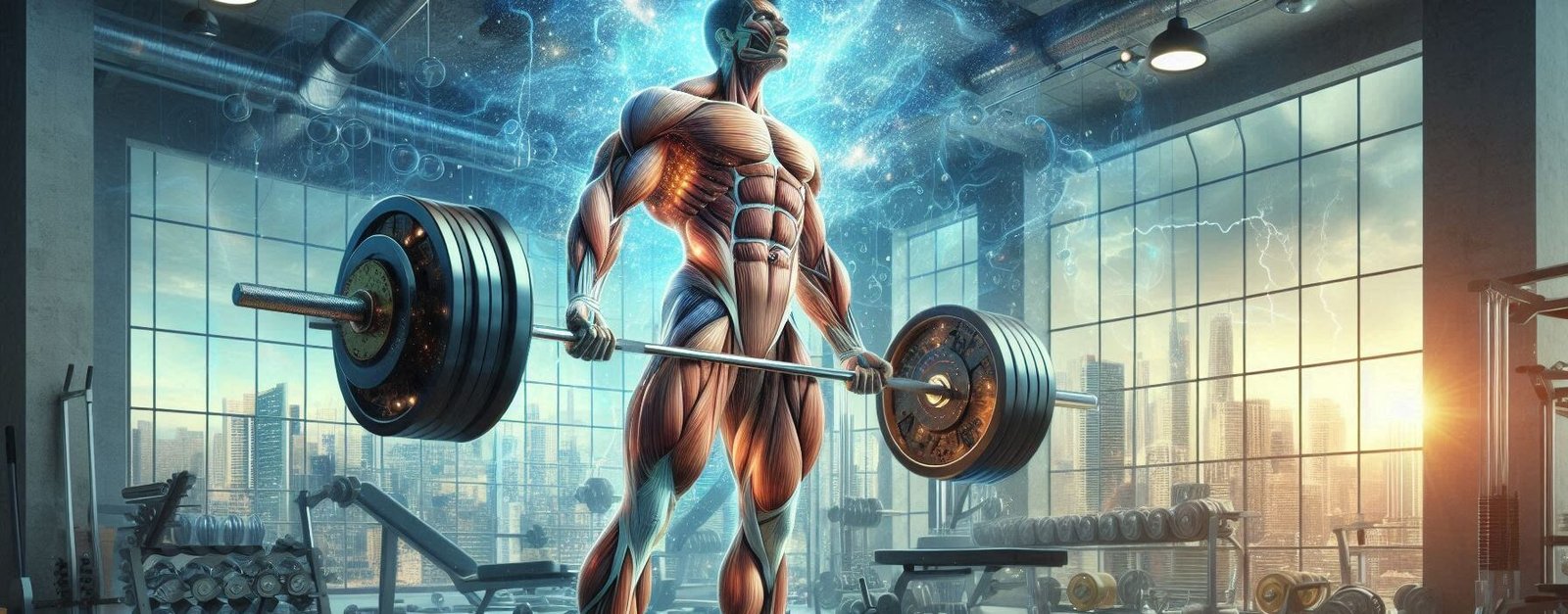
Ah, the dreaded plateau. It’s that moment in your fitness journey when you feel like you’re pushing harder than ever, but your muscles seem to have taken a vacation—probably somewhere sunny and far away from your gym.
You know what I mean; one day you’re feeling strong, lifting weights like a superhero, and the next, it feels like those weights are glued down with super glue.
So, how do we break through these frustrating barriers? Let’s dive into some practical tips that will help you smash through those plateaus like they were made of paper.
Top Takeaways and Key Concepts
Change your routine regularly to prevent your body from adapting and stalling progress.
Increase challenge with new intensity or exercises to keep muscles stimulated.
Improve nutrition with enough protein, carbs, and hydration to support muscle growth.
Prioritize recovery and rest days to allow muscles to repair and grow stronger.
Track workouts consistently to identify plateaus early and adjust training effectively.
Summary of This Article
Please Note: This post may contain affiliate links. If you click one of them, we may receive a commission at no extra cost to you. As an Amazon Associate, I earn from qualifying purchases.
This article explains how fitness plateaus occur when the body adapts to a repetitive workout routine, causing progress to stall. To break through plateaus, it suggests changing exercises or intensity levels, incorporating new training styles like HIIT or kettlebells, and improving nutrition with proper protein and hydration. The article also highlights the importance of rest and quality sleep for recovery and warns that overtraining can hinder progress. Keeping a workout log helps track improvements and pinpoint problems, and seeking help from a fitness professional can provide personalized guidance. Ultimately, persistence and smart adjustments are key to overcoming plateaus and regaining momentum.
Shortcuts to Exercise Equipment Shopping at Amazon
Ellipticals - Exercise Bikes - Recumbent Bikes - Treadmills - Rowers
Dumbbells - Resistance Bands - Kettlebells - Benches - Pull-up Bars
Video Summary
1. Understand What a Plateau Is
Before we can tackle this pesky plateau monster, we need to understand what it actually is. A plateau occurs when your body adapts to the stress you’re putting on it—in other words, it’s become too comfortable with your workout routine.
Imagine if every time you tried something new at a restaurant, the chef served you the same dish over and over again because he thought you liked it! Eventually, you’d get bored (and probably hangry).
Plateaus can happen for various reasons: maybe you’ve been doing the same exercises for months or perhaps you’ve stopped challenging yourself with heavier weights. The key takeaway here is that our bodies are smart—they adapt quickly! So, if you’re not seeing progress anymore, it’s time to shake things up.
2. Change Your Workout Routine
Let’s see—what’s more exciting than trying something new? Not much! One surefire way to overcome a plateau is by changing your workout routine. This doesn’t mean tossing out everything you’ve done so far; rather, it means mixing things up just enough to keep your muscles guessing.
For instance, if you’ve been sticking to traditional weightlifting routines, consider adding some high-intensity interval training (HIIT) or switching up the order of your exercises. If you’re used to doing bench presses first thing in your workout, try saving them for last instead—it’ll make them feel brand new again!
Also interestingly enough, don’t shy away from different types of resistance training either—try kettlebells or resistance bands! Who knows? You might discover a hidden talent for swinging kettlebells while looking vaguely heroic.
3. Focus on Nutrition
Speaking of hidden talents… let’s talk about nutrition! What you eat plays a huge role in muscle growth and recovery. If you’re fueling up on potato chips while wondering why those biceps aren’t growing any bigger, well…you might be onto something there!
Ensure you’re getting enough protein—this nutrient is crucial for muscle repair and growth. Think chicken breast, fish, beans—whatever floats your boat (or fills your plate). And don’t forget about carbs; they provide energy for those tough workouts where lifting even a pencil feels impossible!
Additionally, hydration is key! Drinking water may not sound as exciting as munching on snacks but trust me: staying hydrated helps improve performance during workouts and aids recovery afterward.
4. Prioritize Recovery Time
Now let’s be real: nobody wants to hear about rest days when they could be pumping iron instead! But believe me when I say that giving yourself adequate recovery time is essential for overcoming plateaus.
When we work out hard without allowing our bodies proper rest periods between sessions or sets—we risk injury and burnout—not exactly ideal conditions for building muscle! Think of recovery as an investment; take care of those muscles today so they can perform better tomorrow.
Make sure you’re getting quality sleep each night too; research shows that poor sleep patterns hinder muscle growth significantly (plus who wants dark circles under their eyes?). Aim for at least seven hours per night if possible—and yes—that includes napping whenever feasible!
5. Track Your Progress
Honestly speaking? Keeping track of what works (and what doesn’t) can save both time and frustration in the long run! Consider keeping a fitness journal where you log exercises performed along with sets/reps/weights lifted each session—it’ll serve as motivation when progress seems stagnant.
Tracking allows us not only recognize achievements but also identify trends leading up towards plateaus themselves: did I skip leg day too often? Did I forget my post-workout snack after particularly grueling sessions?
By monitoring these details regularly—you’ll have tangible proof showing how much stronger/fitter/better overall shape you’ve become over weeks/months—even if results aren’t visible right away!
6. Seek Professional Guidance
If all else fails—or maybe even before then—consider enlisting help from professionals such as personal trainers or coaches who specialize in bodybuilding techniques tailored specifically toward overcoming obstacles like plateaus!
They can assess individual needs based upon current fitness levels while providing personalized recommendations designed around goals set forth earlier within this article (like breaking free from complacency!). Plus having someone knowledgeable cheering us on makes exercising more enjoyable…and less lonely too!
And hey—who wouldn’t want another person watching them sweat profusely while attempting new moves?
Conclusion
In conclusion folks: hitting plateaus happens—but they don’t have to stay permanent fixtures within our lives forevermore! By understanding causes behind stagnation while implementing changes across multiple facets—from workouts & nutrition down through recovery practices—we’re sure find ourselves breaking through barriers previously believed insurmountable!
So, lace-up those sneakers once again; grab whatever equipment available nearby & remember: persistence pays off—even against stubborn plateaus lurking around corners waiting ambush unsuspecting lifters everywhere!
Suggested External Resources:
Breaking Through Fitness Plateaus
https://www.bodybuilding.com/content/breaking-through-fitness-plateaus.html
How To Overcome Weightlifting Plateaus
https://www.menshealth.com/fitness/a19547734/how-to-overcome-weightlifting-plateaus/
Nutrition Tips for Muscle Growth
https://www.healthline.com/nutrition/muscle-building-nutrition-tips
Frequently Asked Questions
What is a muscle building plateau?
A plateau is when your body adapts to your current training routine, causing progress to stall even though you are still working out consistently.
How does changing my workout routine help break plateaus?
Introducing new exercises, switching exercise order, or adding HIIT forces your muscles to adapt again and helps restart progress.
Why does nutrition matter when stuck in a plateau?
Protein supports muscle repair and carbs supply energy for intense training, while proper hydration assists performance and recovery.
Should I increase intensity to get past a plateau?
Increasing intensity or trying new resistance tools like kettlebells or bands can stimulate new muscle growth and overcome stalling.
How important is recovery in breaking plateaus?
Rest days and quality sleep allow muscles to repair and grow, preventing burnout and helping restore training progress.
Can tracking workouts really help identify plateaus?
Tracking sets, reps, weights, and intensity reveals progress patterns, highlights when growth stops, and shows where changes are needed.
Should I consider professional guidance when progress stalls?
Trainers can provide personalized adjustments, correct form issues, and design routines to challenge muscles more effectively.

Kevin Collier is a passionate fitness expert dedicated to helping individuals achieve their health and wellness goals. With a focus on weight lifting, exercise routines, and effective weight loss strategies, he aims to inspire and motivate others on their fitness journeys. Through evidence-based insights and practical advice, Kevin empowers readers to make informed decisions about their health, encouraging a balanced approach to fitness and overall well-being. Whether you’re a beginner or an experienced athlete, his expertise offers valuable guidance to elevate your fitness game.




